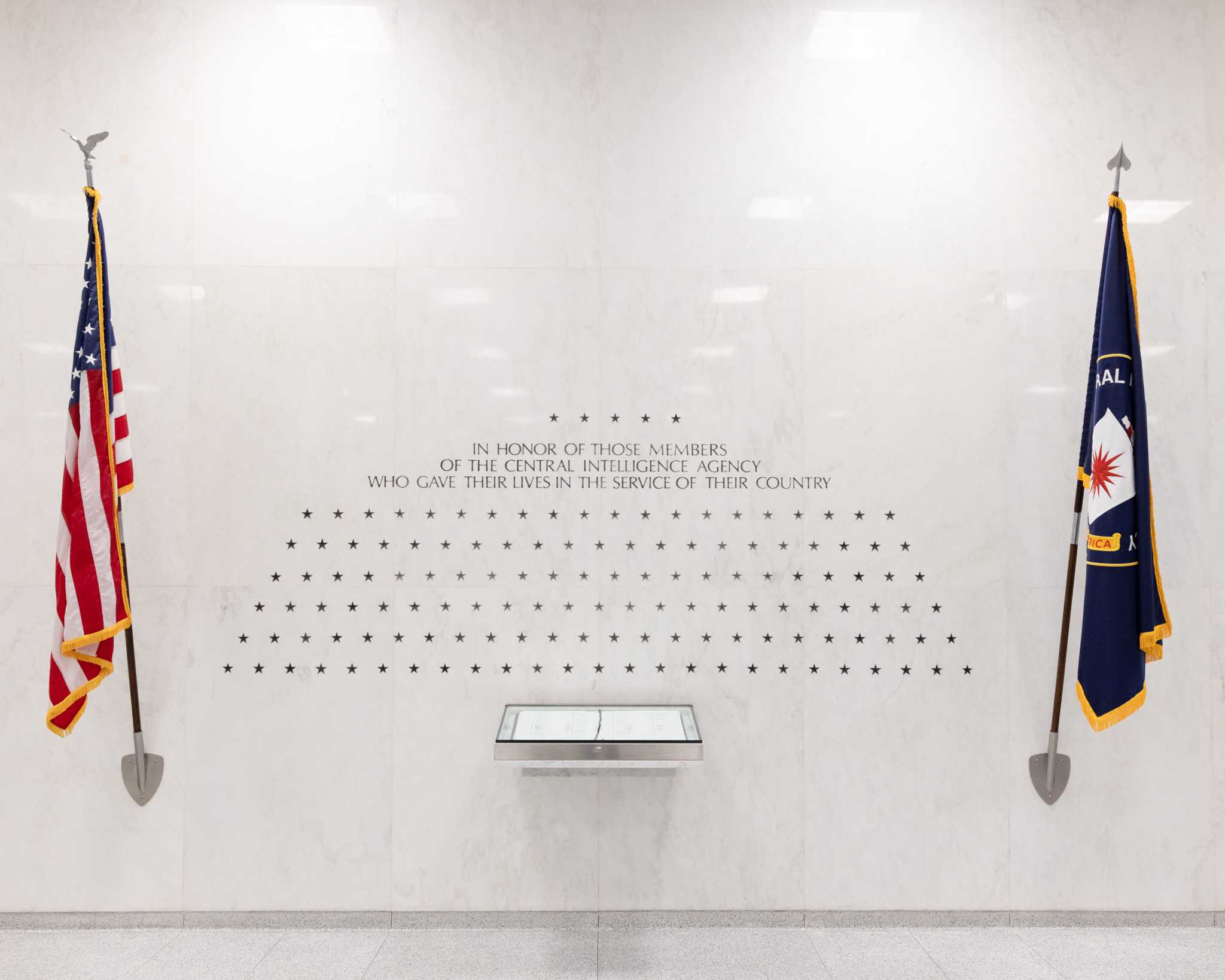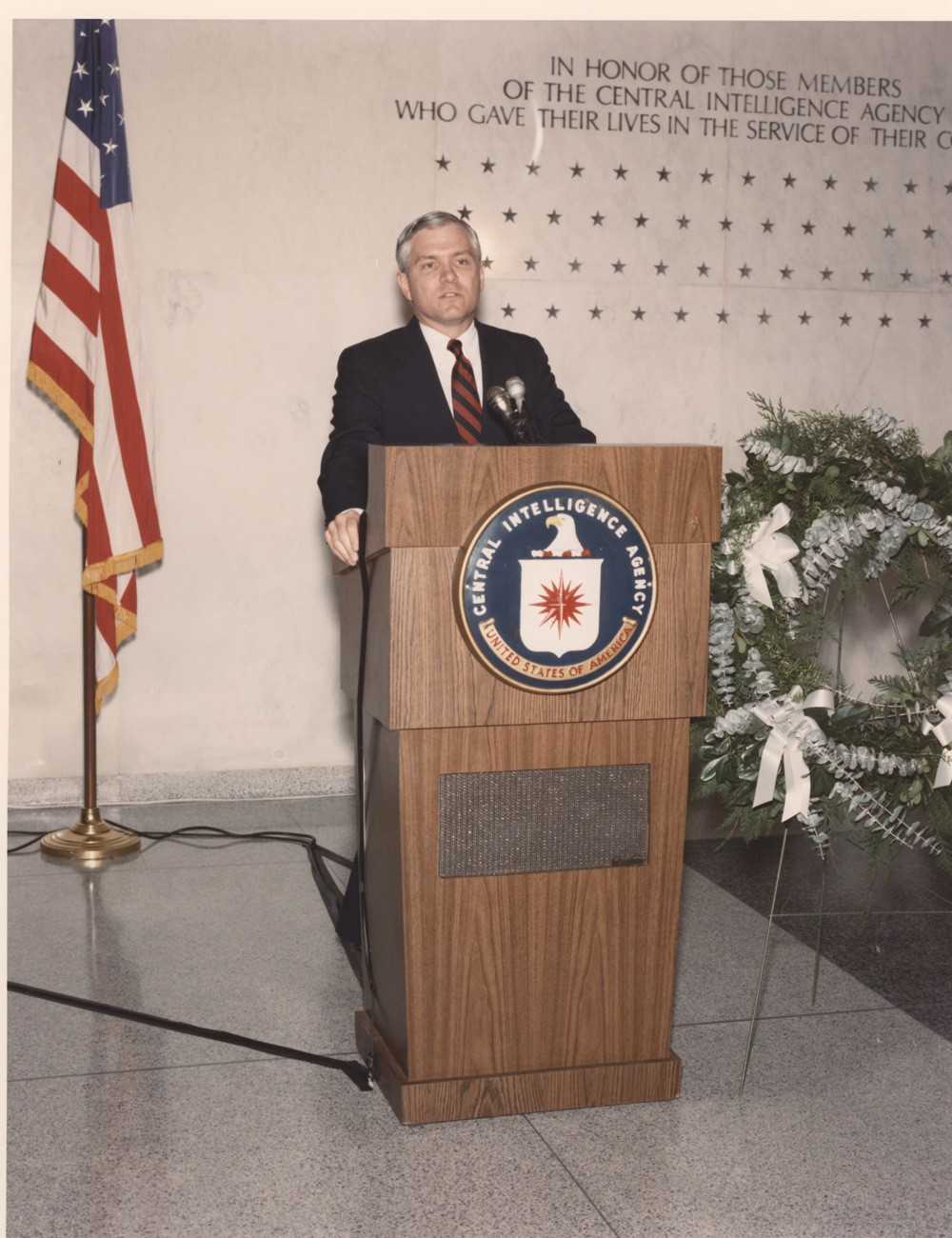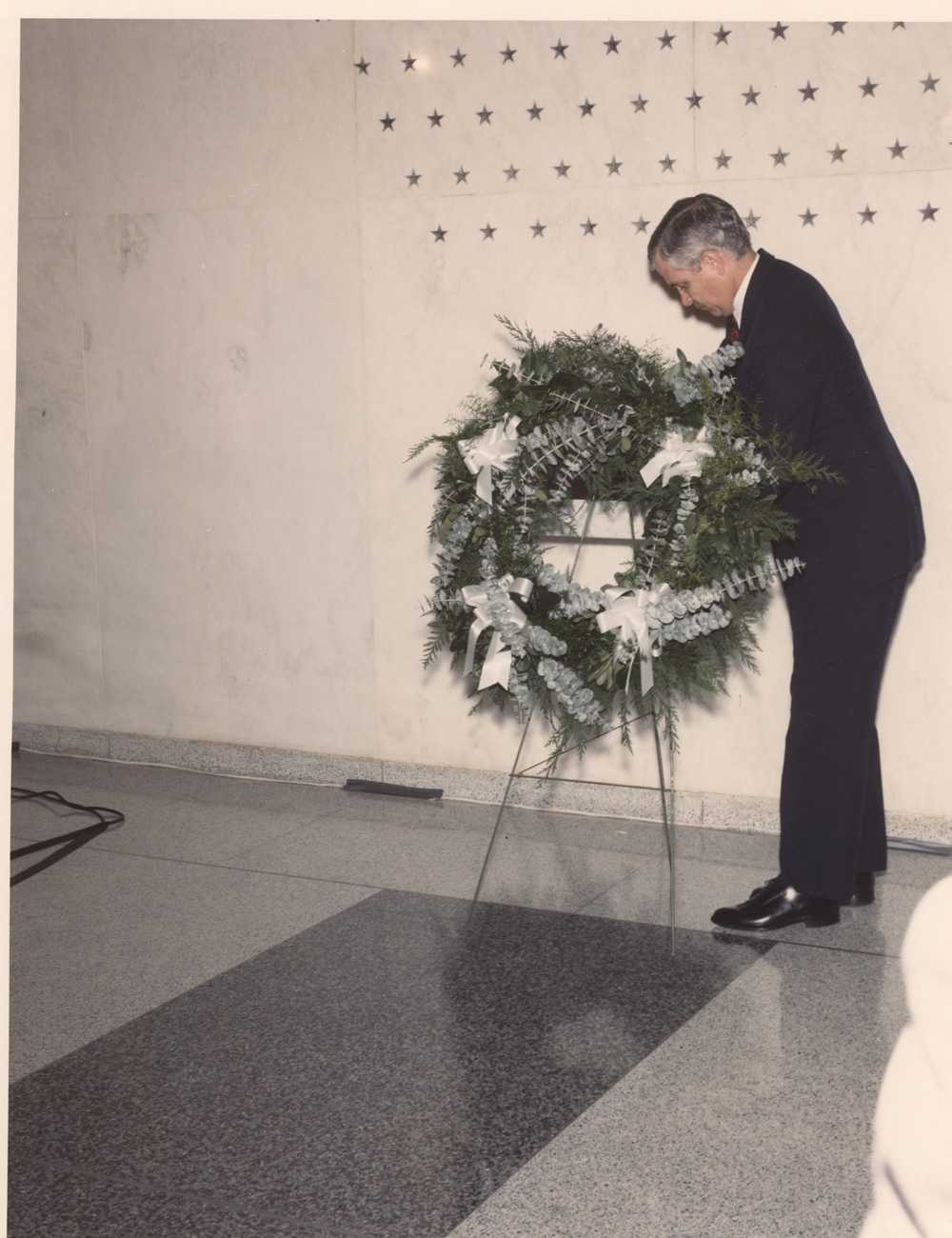
Just inside the main entrance of the CIA is a white marble wall with a collection of stars etched into the cold, hard stone. Each star memorializes a life lost in the line of duty, a sacrifice for this nation.
The inscription among the constellation reads, “In honor of those members of the Central Intelligence Agency who gave their lives in the service of their country.”
The Memorial Wall was created in July 1974, when 31 stars were chiseled into the marble. There was no dedication ceremony, no pictures taken, and no fanfare. The stars and inscription simply appeared. The stars sat in silent commemoration for the next 13 years without ceremony.
When Harold Vogel designed the original wall, it was not intended for the large number of stars that appear today. It is a very sad thought, all those sacrifices.
Stone Carver
Tim Johnston
Finally, in 1986, a counterintelligence officer suggested that a ceremony be held annually in front of the Wall because “the majority of our employees, particularly the younger generation, are barely aware of the existence or the significance of this memorial.” The officer said this custom would result in “rising morale and pride in our achievements which, in turn, would greatly contribute to our continuing effort to achieve excellence.”

CIA senior leadership endorsed the idea, and the first Memorial Ceremony was held in 1987 with Deputy Director Robert M. Gates presiding. It was a simple event, attended by a small number of Agency officers.
By the time of that first ceremony the number of stars on the wall had grown to 50.
Prior to this ceremony, employees who died in the line of duty were honored in small private services, typically composed of immediate family and the CIA Director or another senior CIA official.
Every year since then, the Agency has gathered to remember its fallen. But just as time has changed the tradition of remembrance, so too has it changed the ceremony.
Ceremonies that honor the dead are, in truth, for the living. They remind us of our mortality but also celebrate the lives and memories of those we have loved, trusted and respected. Certainly, we mourn their loss—but we also glory in the knowledge of their extraordinary contribution to our service and to our country.
Deputy Director, May 1987
Robert M. Gates
For the first two ceremonies, only Agency employees were allowed to attend. That changed in 1989, when Richard Welch’s widow and son were in attendance as honored guests of the Directorate of Operations.
Starting in 1990, under Director William H. Webster, all surviving non-Agency family members who could be found were invited to attend the ceremony. The families, whether their loved one died long ago or just that year, were invited. Many return year after year.
In 1995, Director John M. Deutch read all of the names of the fallen officers, including those still undercover, aloud, a practice that continues to this day. This was a significant addition to the ceremony, given that it was proposed by operations officers – almost all of whom operate undercover.
The annual Memorial Ceremony is the only time when fallen officers who were undercover have their names read aloud.
The Americans commemorated by these stars came from all walks of life. They heard the call to duty and chose to serve in an agency unlike any other. Quiet patriotism was their hallmark. They would advance freedom and build a better world, not for public acclaim, but because it is the right thing to do.
Director of the CIA, May 2008
Michael V. Hayden
In 2009, Director Leon E. Panetta began a new tradition. He presented a replica of a star from the Wall to the brothers of Douglas S. Mackiernan, the first Agency officer killed in service to the United States.
Now, every family of each fallen officer receives a replica of a memorial star, sculpted by the artist who engraves them on the Memorial Wall, and carved of the same marble. In 2009 there were 90 stars on the wall.

DD/CIA Gates laying a wreath at the first Memorial Ceremony in 1987.
The Memorial Ceremony has grown to one of the largest annual events at CIA and is conducted almost entirely by Agency employees.
It begins with the audience standing for the presentation of colors by the CIA Honor Guard, the National Anthem, and an invocation or opening prayer.
The Director of the CIA typically presides over the event and delivers remarks. Those comments highlight the sacrifices made by Agency officers in defense of this nation and often profile specific officers honored with a memorial star, including officers who may have died that year.
The names of the fallen are then read by five senior Agency officers, representing each Directorate.
Following the roll call, a member of the Honor Guard — accompanied by the Director — places a wreath of flowers in front of the Book of Honor.
As attendees gaze at the stars carved into the stark white marble, the ceremony concludes with a benediction and the playing of “Taps.”
No matter when or where they served, or whether their names are known to the world or only to us, each cherished colleague remains a constant source of inspiration and courage. We take strength from their powerful example as we carry on their vital work and the vital work of this Agency.
Director of the CIA, 2010
Leon E. Panetta
Inclusion on the Memorial Wall is awarded posthumously to employees who lose their lives while serving their country in the field of intelligence.
Death may occur in the foreign field or in the United States. Death must be of an inspirational or heroic character while in the performance of duty; or as the result of an act of terrorism while in the performance of duty; or as an act of premeditated violence targeted against an employee, motivated solely by that employee’s Agency affiliation; or in the performance of duty while serving in areas of hostilities or other exceptionally hazardous conditions where the death is a direct result of such hostilities or hazards.
New stars are officially unveiled at the annual Memorial Ceremony, which usually takes place in the spring around Memorial Day.

